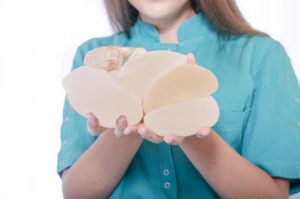What Materials are in Plastic Surgery Implants?
It’s always a good idea to educate yourself about any elective medical procedure you’re considering, and this includes plastic surgery. Patients tend to be particularly concerned and curious if their procedure involves any type of surgical implant, whether it’s in the breasts, face, or another area of the body, and it’s no surprise. After all, if you’re going to have something inside your body for decades to come, it’s natural to want to know exactly what the material is. As a double board-certified plastic surgeon who has seen implants offer successful results for thousands of patients over more than thirty years, I’m happy to offer some insight.
 Thanks to advances in medical technology, there are a number of different options available for surgical implants. Every patient is unique in terms of their medical needs, cosmetic goals, and anatomical structure, so recommendations will vary from one patient to the next, but below are the most common options:
Thanks to advances in medical technology, there are a number of different options available for surgical implants. Every patient is unique in terms of their medical needs, cosmetic goals, and anatomical structure, so recommendations will vary from one patient to the next, but below are the most common options:
- Breast Implants
While the size and shape of the implants vary from one woman to the next, there are generally three options for breast implant material: silicone, saline, and “gummy bear.” All of these options have a shell made of medical silicone, but the difference is the material used to fill the shell. Silicone implants are filled with a silicone gel, while saline implants are filled with saline—sterile salt water. “Gummy bear” implants, on the other hand, use a thicker and more cohesive form of silicone than the traditional silicone implants.
- Implants for the Face and Other Areas of the Body
The purpose of implants is to mimic the tissue in the area, so while breast implants mimic the softness of a breast, chin implants, cheek implants, etc. are typically firmer, so they’re made from more solid materials. The type of material will depend on each patient’s needs, but the most common include solid silicone rubber, GORE-TEX®, and MEDPOR. Implants using any of these options are designed to be biocompatible (easily incorporated into the body’s natural tissue).
- Using Your Own Body’s Tissue
For patients who want to enhance an area of their appearance but prefer to take a more natural route, using the patient’s own tissue has become increasingly popular for a number of different procedures. For instance, breast reconstruction can be performed using muscle, fat, and/or skin from the abdominal area. Facial volume can be restored using excess fat. Rhinoplasty can incorporate cartilage from the ear or rib cage. While this does require an additional incision, these options can offer exceptional results for many patients.
Even subtle changes to the structure of the face, breasts, or other areas of the body can make an extensive difference in a patient’s appearance and, as a result, their self-confidence. If you’re ready to discuss how implants, fat transfer, or other plastic surgery methods can help you reach your aesthetic goals, schedule a plastic surgery consultation with me, Dr. Franklyn Elliott. Or, for more interesting cosmetic surgery information, the latest news, and more, follow my Dr. Elliott Facebook page, as well as my pages on Twitter and Google+.
